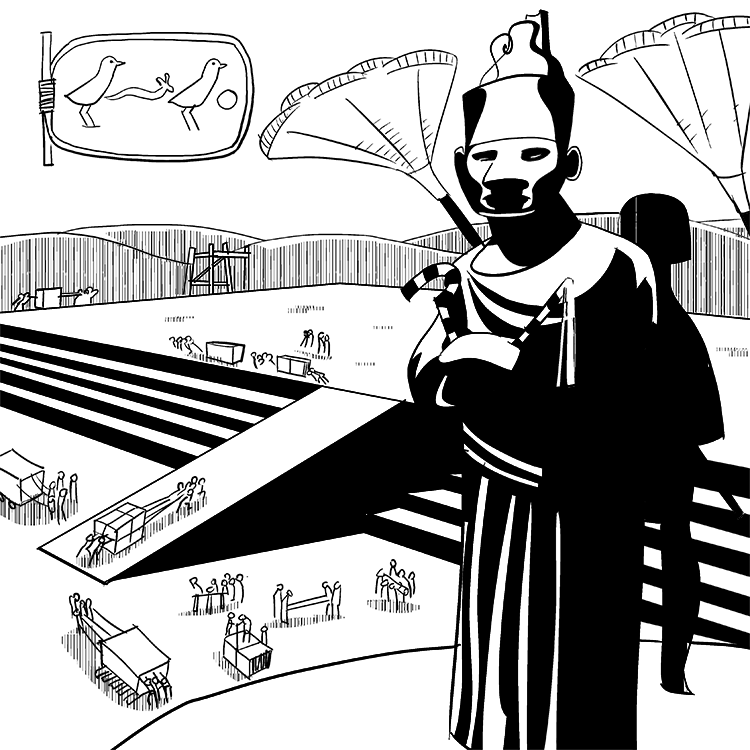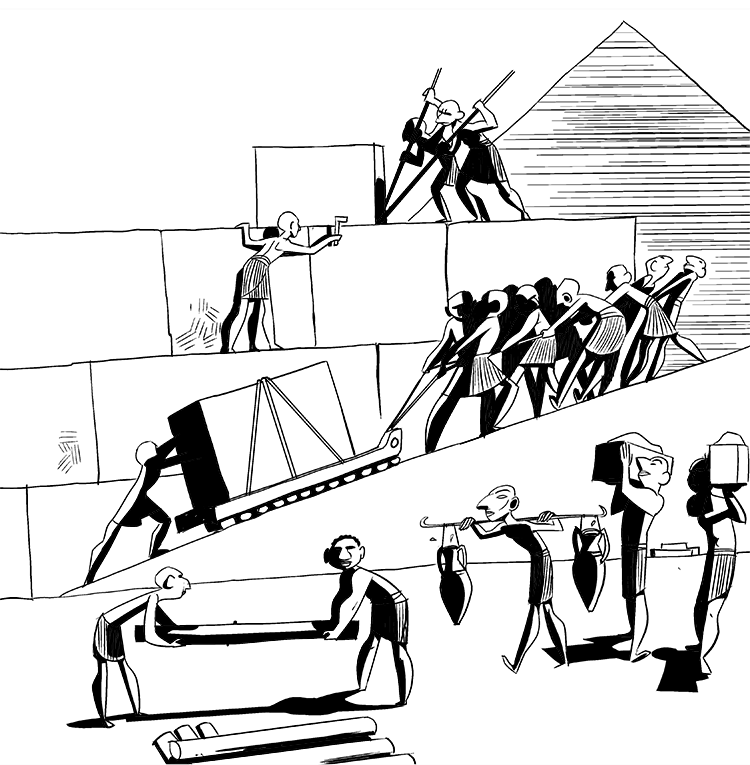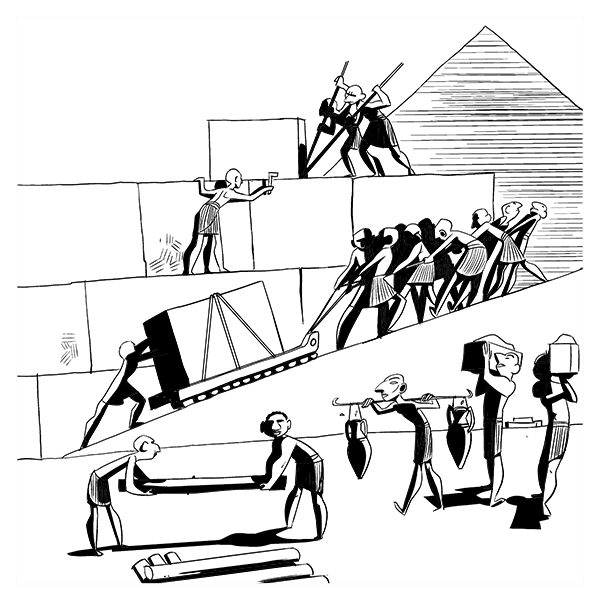The Great pyramid of Giza – the largest of the three pyramids at the Giza Pyramid Complex just outside Cairo, Egypt – stands 455 feet tall and is made up of over two million stone blocks, each weighing around two tons.
The tallest building in the world for more than 4,000 years, the Great Pyramid is huge, yet there is almost nothing inside it. Most of the pyramid is solid rock, except for a few small rooms at the bottom and a couple of passageways for people and air.
Why, then, did the Egyptians build such a massive structure?

The Purpose of the Great Pyramid
Like the many other pyramids found throughout Egypt, the Great Pyramid of Giza was a tomb. More specifically, it was the final resting place for a man named Khufu, an Egyptian pharaoh (ruler) and his family.
A tomb?! Really?! The largest ancient structure in the world was built for some dead people??
Not quite. Khufu and his family weren’t just any old people. As the pharaoh, he owned all the lands in Egypt and was also the head of Egyptian religion. Such status gave him the wealth and power needed to embark on such a massive construction project.
Khufu would have wanted such an elaborate tomb also because of the Ancient Egyptian’s belief in the afterlife. Egyptian religion preached that life did not end at death, and so society placed considerable importance on funerals to ensure an easy passing. Great efforts were made to preserve bodies – this is why we have mummies! – and it was common for people to be buried with the family members and possessions they hoped to take with them after they died.
This is all the Great Pyramid is, a massive tomb for the Egyptian pharaoh and all the things he’d hoped to bring with him to the afterlife.

Building the Great Pyramid
We certainly could build the Great Pyramid of Giza today. But we would need cranes, trucks, power tools, heavy machinery, and much more to make it possible. The ancient Egyptians, however, had none of these things.
So, how did they do it!?
We don’t really know for sure. But the best answer we can come up with is “very, very slowly.”
The job also would have required lots and lots of people.
Records indicate that around ten thousand workers, both Egyptian and foreign, labored in three month shifts for somewhere between ten and twenty years to build the Great Pyramid of Giza. These workers were skilled and probably paid some sort of a wage for their work.
It’s hard to imagine working such a job. It was backbreaking, and many died. Stones were cut slowly using copper hand tools, and moving them from one place to another was a long, grueling process that may have involved pushing the stones over wet surfaces or rolling logs.
Around How did the Egyptians lift the stones and put them in place?
The best theories are that they used ramps, but they would have needed something else to get these massive stones up so high in the air, such as a pulley or a lever. However, no evidence exists that tells us exactly how they did this, so we have no other choice but to speculate.
But no matter the exact method, a structure as large as the Great Pyramid could not have been built by a primitive people. The technology and coordination needed to complete such a monument suggests Egyptian society was perhaps more advanced than what we might imagine a civilization that existed more than 4,000 years ago to be.
Written by Matthew Jones
Illustrated by Pablo Velarde Diaz-Pache
